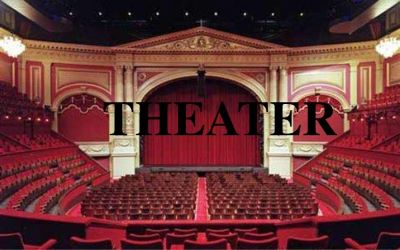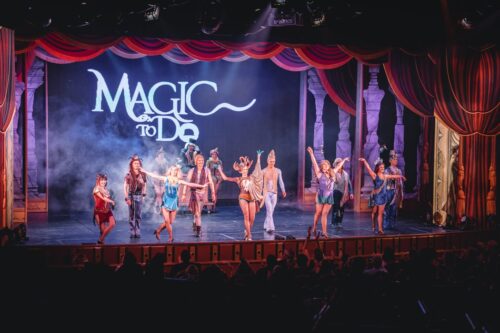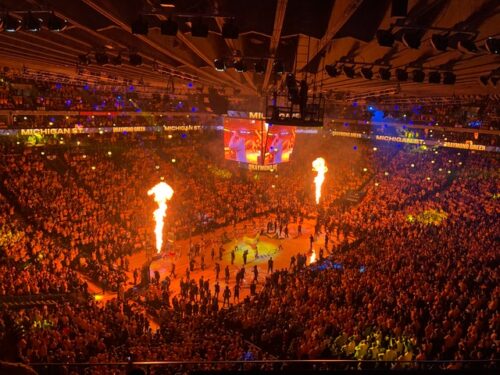What You Need to Know About
Different Types of Theater Stages
Since ancient times, people have enjoyed gathering together and hearing stories. That later developed into theatrical performances where the action of the story is performed by a variety of actors, sometimes with elaborate costumes and set designs to transport the audience into a different place and time.
Just as theatrical performances have developed, so have theater and stage design. Today, there are several main forms of stages and theaters used for different types of performances. There is no perfect size, shape, or type of theater or stage. It really depends on the performance. Here are five main types of theater stages to consider for your next show.
5 main types of theater stages
1. Proscenium stage
The proscenium stage is one of the most common and classic theater stages. The typical feature of a proscenium stage is the proscenium arch (which doesn’t actually have to be in an arch shape) that frames the stage and through which the audience watches the action. The stage itself is usually deep and rises up away from the audience.
Proscenium stages often have a lowered area below the stage for musicians, as well as a fly system above the stage for moving lighting setups and set pieces. Sometimes, the stage has a forestage that extends past the proscenium frame into the space occupied by the audience.
Proscenium stages are ideal in that they can accommodate many different types of performances, whether they need a little or a lot of space for lighting and set designs. Actor entrances and exits can be made gracefully on proscenium stages.
2. Thrust stage
A thrust stage “thrusts” out into the theater space, with the audience surrounding it on three sides. The stage itself can be different shapes, though it is very often square or rectangular.
In some cases, the back of the stage may feature an enclosed proscenium stage, where background scenery is placed. However, compared to a proscenium stage, the audience rarely views action inside the proscenium in a thrust stage.
A thrust stage offers a more intimate performance experience, since it can typically accommodate a larger audience within close proximity to the stage. The Globe Theatre, which staged many of Shakespeare’s plays, is a good example of a thrust stage.
3. Arena or in-the-round stage
In an arena or in-the-round stage, the audience completely surrounds the stage. The difference between the two stages is that arena stages are typically larger than in-the-round stages. The stage itself doesn’t have to be round, though it often is. It can also be diamond-shaped or triangular.
In-the-round stages were frequently used in classical theatre in ancient Greece and Rome. It required very little scenery and no stage curtain, which allows for realistic and interesting staging.
Arena and in-the-round stages are ideal for classical theater and high-energy productions. They also work well for theatrical productions in non-traditional spaces, such as a fair, festival, or another public area.
4. Platform stage
Platform stages typically comprise a raised platform at one end of the theater or room, facing the audience. The stage is usually rectangular, with either a level or a raked stage. The stage can be open, with no curtain or backstage area. In that case, it is sometimes referred to as an end stage or an open stage.
Platform stages are ideal in multi-use performing arts venues, such as event halls, where theater is just one of the space’s many uses. With minimal lighting and curtain usage, there are also typically fewer code requirements, which make platform stages a good solution for venues that don’t typically put on elaborate productions, but would like to stage some performances from time to time.
5. Black-box or studio theaters
A black-box or studio theater is a very basic and flexible performance space. It’s usually a single room that may or may not be painted black, with minimal embellishments and adornments.
The stage is the floor of the room, which is also typically the first row of the audience. There is flexibility to the space, and the seating can be configured in any number of different ways for different types of productions. Chairs on platforms make for easy rearranging.
Black-box theaters became popular around the 1960s and 1970s along with the rise of experimental theater. They require minimal costs and allow for budget-friendly and intimate performances to take place. Many different spaces can be transformed into a black box theater, making it one of the most flexible and adaptable performance spaces available.
Choosing the perfect performance space
What type of stage or theater you should use for your performance depends on a variety of factors, including the size of the stage you need and the audience. Whether the performance would benefit from a more intimate experience is another consideration. Sometimes, you are limited in the space you have to work with. If not, there are plenty of wonderful and unique performance spaces you can book for your event.



